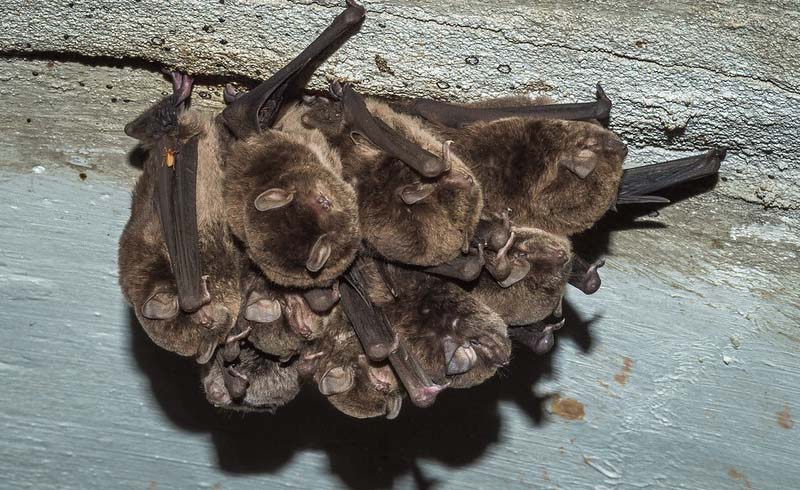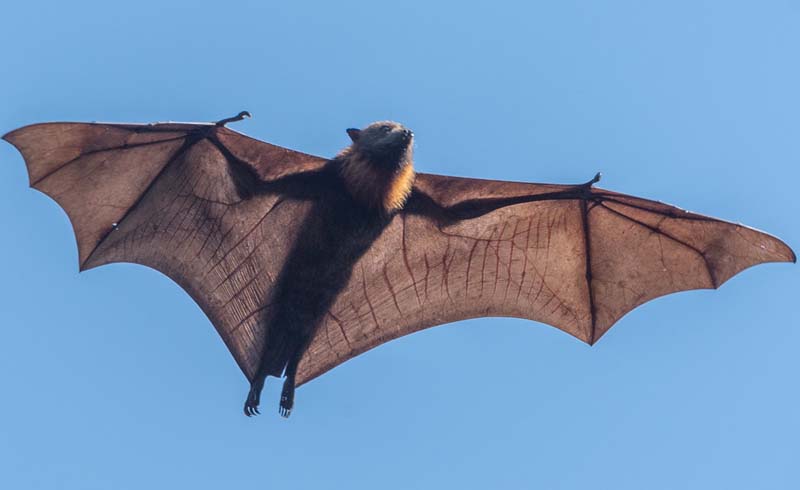Practically all species of bats sleep hanging upside down. It is a very common and efficient posture to rest and sleep, as it allows them to hold onto surfaces with their claws and use less energy to maintain that position.
There are some bats in the Vespertilionidae family that can sleep resting on the ground. These bats, like the common brown bat (Myotis lucifugus), can rest on the ground when there are no suitable places available to hang upside down.
It is important to note that it is rare to find bats sleeping on the ground, as it makes them vulnerable to predators and other dangers. Bats usually look for safer and elevated shelters to rest and sleep.
Why do they sleep hanging upside down?
This position allows them to save energy and helps them maintain their balance. By sleeping hanging upside down, bats can keep their body relaxed and do not need to spend energy holding up their weight. Additionally, if a bat feels threatened, it can drop its body and fly away immediately, allowing it to escape quickly.
How much do bats sleep?
Bats are nocturnal animals that spend most of the day sleeping. In general, bats sleep between 16 and 20 hours a day, which means they spend most of their time resting.
It is important to note that the amount of time bats sleep per day varies depending on the species and the bat's age. Newly born bats can sleep up to 20 hours a day, while adults usually sleep around 8 hours a day. Some bat species, like horseshoe bats and free-tailed bats, have unique sleep patterns and can sleep in short periods of time throughout the day and night.
The amount of sleep they need can vary depending on the species and their diet.
Insect-eating bats usually need more sleep than fruit-eating bats, as they need more time to process their food. Fruit-eating bats have a diet that is richer in sugars and can process food more quickly, which means they need less sleep.
Although bats can sleep during the day or night, most species are nocturnal and sleep during the day in dark shelters, such as caves, hollow trees, and abandoned buildings. Bats usually sleep together in groups, forming colonies of different sizes, which can range from a few individuals to thousands.







